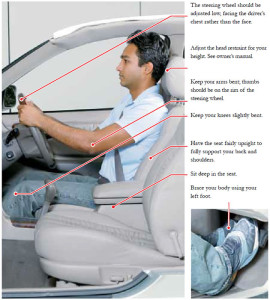NSW Mobile phone road rules 2016
Learner and provisional P1 (red Ps) drivers and motorcyclists
Learners and provisional P1 licence holders are not permitted to use a mobile phone at all while driving or riding.
This includes when waiting at traffic lights or stuck in traffic. You must be parked out of the line of traffic to use your phone in any way.
These laws encourage learner and P1 drivers and riders to concentrate on developing their vehicle control and hazard-perception skills.
Mobile phone use can distract novice drivers and riders from the driving task.
From 22 January 2016, learner and P1 drivers and riders penalised for illegally using a mobile phone (four demerit points) will exceed their demerit point threshold and face a three-month licence suspension.
Changes to help keep L and P plate drivers safer
From 1 December 2016, P2 licence holders will no longer be permitted to use a mobile phone at all while driving or riding. P2 licence holders will have the same restrictions as learner and P1 licence holders.
1. Can I hold and use my phone when waiting at traffic lights, or stuck in traffic?
No. It is illegal to hold and use your phone at any time while driving or riding. If you want to hold and use your phone your vehicle must be parked out of the line of traffic.
2. Can I use my mobile phone for calls if it is on loudspeaker and in my lap?
No. It is illegal to have your mobile phone touching any part of your body, other than to pass it to a passenger.
3. Can I have my mobile phone in my pocket if I’m using Bluetooth to make or receive a call?
Yes, if you have a full unrestricted licence or a provisional P2 licence (green Ps).
You can use a mobile phone for calls if it does not require you to touch the phone in any way (e.g. via Bluetooth).
The rules allow your mobile phone to be in a pocket of your clothing.
No, if you have a learner or provisional P1 licence (red Ps), you are not permitted to use a mobile phone at all while driving.
4. Can I listen to music on my phone if it is in a cradle?
Yes, if you have a full unrestricted licence or a provisional P2 licence (green Ps). You can use the audio playing function of a mobile phone as long as the phone is secured in a mounting fixed to the vehicle and doesn’t obscure your view of the road, or the phone can be operated without you touching any part of it, such as via Bluetooth.
No, if you have a learner or provisional P1 licence (red Ps), you are not permitted to use a mobile phone at all while driving.
5. Can I dial a number if my mobile phone is in a cradle?
Yes, if you have a full unrestricted licence or a provisional P2 licence (green Ps). You can use a mobile phone for calls if it is secured in a mounting fixed to the vehicle. Using a mobile phone legally can still be distracting. Consider if the call is urgent and the demands of the traffic before using your mobile.
No, if you have a learner or provisional P1 licence (red Ps), you are not permitted to use a mobile phone at all while driving.
From 1 December 2016, P2 licence holders will no longer be permitted to use a mobile phone at all while driving or riding. P2 licence holders will have the same restrictions as Learner and P1 licence holders.
6. Can I use the GPS function on my mobile phone?
Yes, if you have a full unrestricted licence or a provisional P2 licence (green Ps). You can use a mobile phone as a driver’s aid, such as GPS, as long as it is secured in a mounting fixed to the vehicle and doesn’t obscure your view of the road. You cannot hold your phone to use the GPS function.
No, if you have a learner or provisional P1 licence (red Ps), you are not permitted to use a mobile phone at all while driving.
7. Can I use a GPS device that is not a phone if I am a learner or provisional P1 licence holder?
Yes. A GPS device that is not a mobile phone is permitted for all drivers, as long as the device is secured in a mounting fixed to the vehicle and does not obscure the driver’s view of the road. The device must not be placed in a location that will increase the likelihood of injury in a crash.
8. Can I send a text message if my mobile phone is secured in a cradle?
No. You cannot text at all while driving, whether or not your phone is secured in a mounting fixed to the vehicle.
9. What kind of cradle can I use for my mobile phone?
Your mobile phone must be in a mounting that is commercially designed and manufactured for that purpose.
10. Where can I attach a cradle to my vehicle?
The mounting must be fixed to the vehicle in the manner intended by the manufacturer. It must not obscure your view of the road (in front and to the sides), and must not be placed in a location that will increase the likelihood of injury to you or a passenger in a crash.

